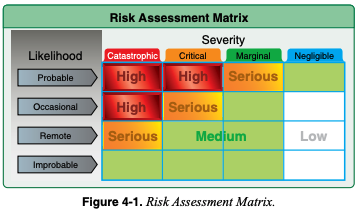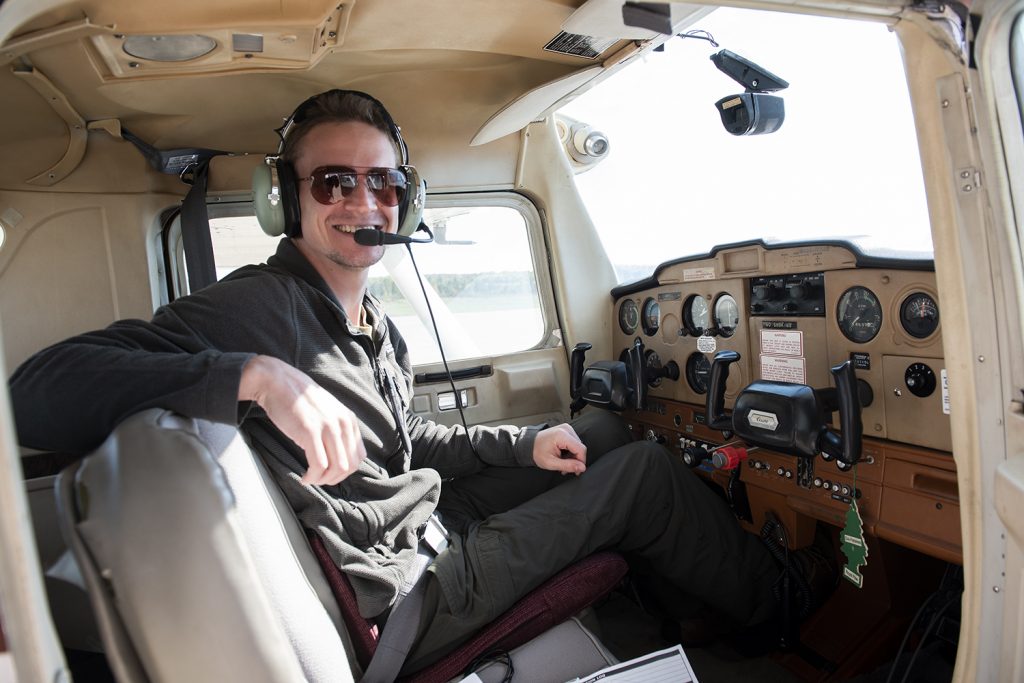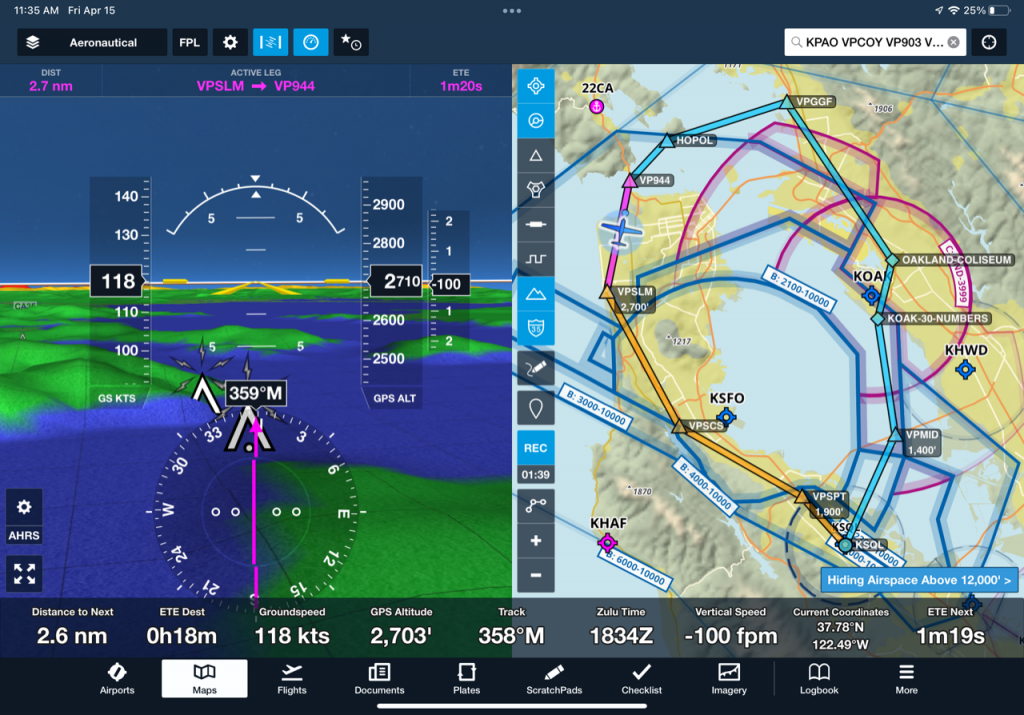To help learn ADM and risk assessment, I require solo students to get permission before they fly. (PPR.)
A student recently wanted to fly solo in the traffic pattern with showers in the vicinity (VCSH). The winds were calm and the ceilings were high, but rain is a real concern.
Is it safe to fly as a student solo with rain showers in the vicinity?
Risk Assessment
The FAA offers a framework in their Risk Management Handbook to determine how much risk a particular hazard incurs. This framework is the Flight Risk Assessment Tool, or FRAT.1
It breaks a hazard into the likelihood of an outcome and the severity of the outcome.
Likelihood
- Probable – An event may occur several times.
- Occasional – An event may occur sometime.
- Remote – An event is unlikely to occur but is possible.
- Improbable – An event is highly unlikely to occur.
Severity
- Catastrophic – Results in fatalities and/or total airframe loss
- Critical – Severe injury or major airframe or property damage.
- Marginal – Minor injury or minor airframe or property damage.
- Negligible – Less than minor injury or damage.
Based on the cross-match of the two, a Risk Assessment Matrix gives a composite risk.

Risk Assessment for Student Solo With VCSH
Applying this framework to the student’s question provides good insight.
- The risk is loss of control (LOC) in the pattern. They are not instrument rated, and a sudden drop in visibility could result in an unrecoverable attitude at traffic pattern altitude.
- The likelihood is remote. Showers are in the vicinity, so it’s not improbable. However, this was light rain and unlikely to disorient.
- The severity is catastrophic. LOC at a low altitude can lead to significant damage, serious injury, or even loss of life.
Example FRAT for a Student Solo Flight With VCSH on an Otherwise Nice Day
| Hazard | Risk | Likelihood | Severity | Composite Risk |
|---|---|---|---|---|
| VCSH, Student Pilot | LOC | Remote | Catastrophic | Serious |
| Wet Runway2 | Overrun Runway | Remote | Critical | Medium |
Critical or Serious risks should be mitigated before flight. A Medium risk is allowable, assuming the pilot understands and feels comfortable with that risk.3
Thoughts on Student vs CFI Risk Tolerance
What about a slightly different question: If a student wants to fly solo in conditions that are beyond the risk tolerance of the CFI, but are a reasonable amount of risk for a student pilot, should the CFI allow the student to accept that risk?
For example, a solo student taking the first flight in a plane after it is returned to service from maintenance work.
| Hazard | Risk | Likelihood | Severity | Composite Risk |
|---|---|---|---|---|
| First Flight After Mx | Partial System Failure | Remote | Marginal | Medium |
A student pilot might accept this Medium risk, while a CFI might prefer another pilot fly it first. Let’s try a sample FRAT from the CFI’s perspective.
| Hazard | Risk | Likelihood | Severity | Composite Risk |
|---|---|---|---|---|
| Student Solo Encounters Mx Issue on First Flight After Mx | CFI License Action | Improbable | Critical | Medium |
There isn’t a single right answer, as everyone has different risk tolerances. However, the CFI’s certificate is on the line, so whatever they decide is the final word.
- As a Plausible Useful Idea for this article, I’ve found this framework helpful for dog and baby decisions. Do we need to bring diapers on this walk? Occasional, Marginal, Medium: probably ok. Do we need to stop driving so the dog pacing in the back can poop? Occasional, Critical, Serious: we’re pulling over. ↩︎
- Included as an example of another type of VCSH risk to consider. ↩︎
- Although mitigating Medium risks is also great. ↩︎

